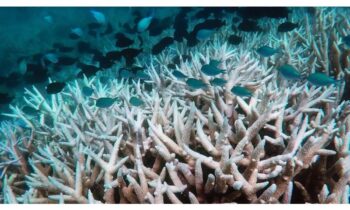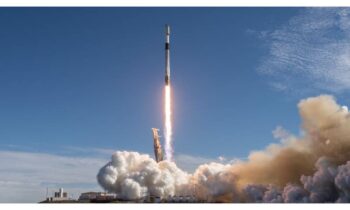
Astronomers have long been fascinated by an exoplanet the size of Jupiter due to its intense heat, shrill winds, and glass rain that falls in a sideways motion. Recently, information obtained by the James Webb Space Telescope has uncovered an additional fascinating characteristic of HD 189733b, the planet has a rotten egg odor.
Webb’s finding allowed researchers examining the atmosphere of HD 189733b to detect traces of hydrogen sulfide, a colorless gas that has a pungent sulfurous stink and has never been detected outside of our solar system. The finding adds to our understanding of the possible makeup of exoplanets.
A multi-institutional team’s compilation of the results was published in the journal Nature on Monday.
A strange planet with lethal weather
After discovering HD 189733b for the first time in 2005, researchers classified the gas giant as a “hot Jupiter”—a planet with temperatures that are scorching and a chemical makeup similar to that of Jupiter, the largest planet in our solar system. As the planet moves in front of its star, astronomers may investigate HD 189733b, the closest hot Jupiter to Earth, which is just 64 light-years away. It’s one of the exoplanets that has been investigated the most as a result.
As one of the earliest transiting exoplanets ever found, HD 189733 b is not only a gas giant planet but also a “giant” in the field of exoplanets, according to lead study author Guangwei Fu of Johns Hopkins University, in an email. “It is the anchor point for many of our understanding of exoplanet atmospheric chemistry and physics.”
Because it is 13 times closer to its star than Mercury is to our sun, the planet is 10% larger than Jupiter but much hotter. According to Fu, HD 189733b completes one orbit of its star in roughly two Earth days.
Because of its closeness to the star, the planet experiences intense winds that cause glass-like silicate particles to fall sideways from high clouds around it at a speed of 5,000 miles per hour (8,046 kilometers per hour) and a scorching average temperature of 1,700 degrees Fahrenheit (926 degrees Celsius).
Unexpected stench
Astronomers were in for a surprise when they chose to utilize the Webb telescope to investigate the planet in order to see what infrared light—which is invisible to the human eye—could disclose about HD 189733b’s atmosphere.
Although hydrogen sulfide was expected to exist on gas giant exoplanets and is present on Jupiter, Fu noted that evidence of the molecule has been difficult to find outside of our solar system.
According to Fu, “Hydrogen sulfide is one of the main reservoirs of sulfur within planetary atmospheres.” “The high precision and infrared capability of the Webb telescope allow us to detect hydrogen sulfide for the first time on exoplanets, which opens a new spectral window into studying exoplanet atmospheric sulfur chemistry. This helps us to understand what exoplanets are made of and how they came to be.”
According to Fu, the researchers also detected carbon dioxide, water, and carbon monoxide in the planet’s atmosphere, suggesting that these substances may be prevalent on other gas giant exoplanets.
The extreme heat of HD 189733b makes life unlikely, but finding a building block like sulfur on an exoplanet can reveal information about planet formation, according to Fu.
“Sulfur is a vital element for building more complex molecules, and like carbon, nitrogen, oxygen, and phosphate, scientists need to study it more to fully understand how planets are made and what they’re made of,” Fu stated
Certain odorous molecules, like as ammonia, have been found in the atmospheres of other exoplanets before.
However, Webb’s capabilities allow scientists to more precisely identify particular substances in the atmospheres around exoplanets.
Heavy metals on planets
There may be a relationship between metal content and mass since ice giants in our solar system, like as Neptune and Uranus, have higher metal contents than the largest planets in the system, Jupiter and Saturn, although having lower total masses.
Instead of gases like hydrogen and helium, astronomers think that more ice, rock, and metals were involved in the formation of Neptune and Uranus.
Additionally, Webb’s research revealed that HD 189733b’s heavy metal concentrations are comparable to those of Jupiter.
“Now we have this new measurement to show that indeed the metal concentrations (the planet) have provided a very important anchor point to this study of how a planet’s composition varies with its mass and radius,” according to Fu. “The findings support our understanding of how planets form through creating more solid material after initial core formation and then are naturally enhanced with heavy metals.”
The group will now look for signs of sulfur on other exoplanets to see if high sulfur concentrations affect how close some planets form to their host stars during formation.
According to Fu, “HD 189733b is a benchmark planet, but it represents just one data point.” “Just as individual humans exhibit unique characteristics, our collective behaviors follow clear trends and patterns. With more datasets from Webb to come, we aim to understand how planets form and if our solar system is unique in the galaxy.”



